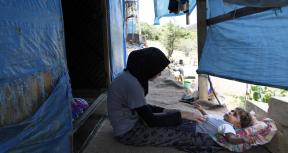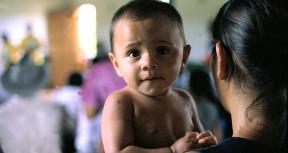Also See: Social Safety Nets and Gender Panel Discussion (December 11, 2014)
The main goal of SSN interventions is to reduce current and future poverty by increasing household income and consumption and improving children's health and education. However, SSNs also impact many other outcomes—employment, fertility, domestic violence, access to resources—and those impacts are typically gender-specific. This systematic review analyzes the available impact evaluation evidence on the effect of SSNs on gender-related results such as increasing women's bargaining power and decision-making, improving education outcomes of boys and girls, and promoting maternal and child health. The review also analyzes gender integration in the World Bank's portfolio of SSN interventions.
Males and females have different roles, responsibilities, constraints, and access to resources, and their options, needs, and response to incentives will be different. Although the impacts of specific SSN interventions found in individual studies are difficult to generalize, the body of impact evaluation literature shows discernible and consistent patterns in the mechanisms that underlie the response of males and females to SSNs.
The evidence also shows that SSN interventions can increase women's bargaining power by providing more resources to the household and to women in particular. SSNs can potentially strengthen women's decision making, but their impact on empowerment is less clear.
SSN projects supported by the World Bank would benefit from incorporating the impact of gender differences into their design, but they rarely do. Most project documents include limited discussion of intrahousehold dynamics and the gender-relevant context of the supported intervention. Women are generally targeted as a vulnerable group or in an instrumental way, without discussing the costs that the intervention may impose on them. Gender is often missing from monitoring and evaluation (M&E) frameworks, except for tracking female beneficiaries. The findings of this report identify opportunities to strengthen the integration of gender into projects.
Distinct Gender Outcomes Depend on Gender-Specific Drivers
SSN interventions can impact a range of outcomes. The explicit goal of SSNs is to reduce current and future poverty; income, consumption, and poverty status (typically measured at the household level) are the main outcomes that SSNs aim to positively impact. Other outcomes analyzed and measured by impact evaluations are education, health, and employment, but fertility, domestic violence, and access to resources are analyzed and measured less frequently. When these outcomes were measured and disaggregated by gender, they confirmed that males and females respond differently to SSNs and benefit from SSNs in different ways.
SSN interventions have gender-specific drivers that influence gender outcomes. Individual impact evaluations can only partially document the precise channels, mechanisms, and circumstances that account for the outcomes observed. However, impact evaluation evidence as a whole can be interpreted in light of the theoretical literature to provide a clear indication of elements that work in gender-specific ways to drive the impacts of SSNs. Drivers of gender outcomes are the factors that influence behavioral change and decision making and determine the impact of SSNs. Drivers include, for example, the opportunity cost of children's time and the expected future earnings as adults that contribute to determining the investments parents make in their children's education; the costs and benefits to men and women taking up employment or program responsibilities; and the ability of the transfer recipient to control the transfer and make consumption, investment, and production decisions. The ability to control and use the resources made available by SSN interventions, and the costs and benefits of subsequent behavioral responses are driven by opportunities and constraints specific to males and females. Opportunities and constraints facing males and females are often distinct and determine how SSN transfers can be used and controlled. And they are influenced by social norms, practices, and regulations.
Impact evaluations of specific interventions tended to focus only on a few selected outcomes. For example, most impact evaluations of conditional cash transfers (CCTs) assessed the intervention's impact on education and health (partly because the conditions attached to the transfer relate to these two variables). Impact evaluations of PWs have looked mostly at the impact of these programs on employment and wages. These are the most obvious and immediate outcomes to assess. But other outcomes such as that of PWs on children's or other household members' welfare also warrant analysis.









